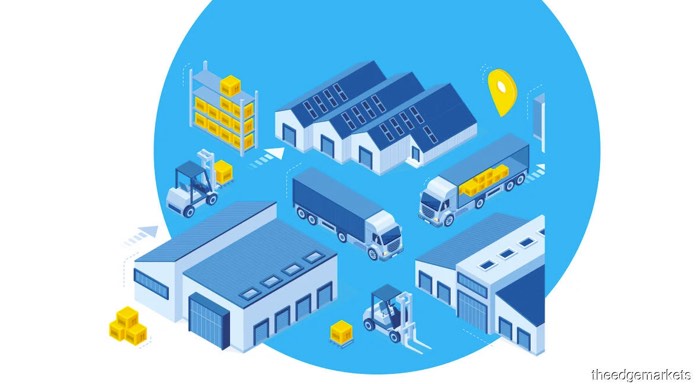The Covid-19 pandemic has permanently transformed the business ecosystem. Retailers who depend solely on daily sales are still very much in the dark about when they will be allowed to reopen for business.
In foggy and uncertain times like these, many business owners have opted to digitalise their businesses in the effort to ensure their businesses are still able to operate in such restrictive times.
The emergence of more adopters has accounted for the noticeable spike in the number of e-commerce vendors on online marketplaces such as Shopee and Lazada in an already rapidly growing e-commerce industry.
For those who are unfamiliar with e-commerce, running a business online is not as simple as creating a website and waiting for sales to come in. Yes, it was once as straightforward as piecing together a blog with pictures and product descriptions, but as the trend for online shopping grew, e-commerce platforms began to evolve.
Marketplaces such as Lazada, GemFive and 11 Street were among the early platforms popular with Malaysians. While the growing popularity of e-commerce has helped the industry, early adopters started facing problems with fulfilment: from storage to packaging and logistics.
I saw this pain point in the growing e-commerce industry and wanted to emulate the fulfilment role in helping e-commerce business owners expedite and manage everything under one roof, similar to what Amazon did in the early 2000s. My partner, Joe, and I saw this opportunity and brought this business model to Malaysian shores.
Back in 2009, there was a lack of volume in the local e-commerce market (though marketplaces such as lelong and Mudah have been around for a long time, they did not gain the popularity that marketplaces such as Shopee and Lazada enjoy).
As the adoption of e-commerce caught on, more businesses started to grow in both volume of products and sales, and were unable to cope with the growing number of sales orders.
More stock-keeping units (SKUs) in place could only mean a higher margin of error — be it shipping out the wrong product or having a product returned because of the wrong size.
As a business owner, it would be correct to say that you would be an expert in your own product, especially in terms of marketing and promotions. Yes, you could probably shave off additional costs by hiring more in-house staff to fulfil the orders for your expanding line of tudung, which is now gaining in popularity among stay-at-home mums, and do the work of dropshipping agents (given the neverending lockdowns).
But what if it were to become so popular that it saw a tenfold increase in sales overnight? One can only imagine the additional workload that would require immediate training and proficiency in the handling of multiple SKUs as well as multiple orders to be processed and delivered throughout Malaysia.
This situation also applies to larger companies — with ever-growing seasonal collections, one would have a difficult time expanding the existing warehouse to accommodate larger numbers of stock.
Furthermore, in recent years, monthly flash sales have become a good excuse for Malaysian shoppers to splurge. Take 11.11 (Singles Day) and all the other double-day sales. The sudden surge in online orders can be exciting, but be overwhelming too.
Businesses need to process orders methodically to fulfil them. They also have to ensure that all the logistical processes — such as warehouse management, pick-and-pack and delivery-to-order tracking — are handled efficiently so that they can manage their sales inventory with ease.
The pain point in business can revolve around many things. For instance, when a business is unable to fulfil all the orders because of poor warehouse management, this can be a “make or break” scenario for businesses of any scale. Smaller businesses that want to scale up have no idea where to start and have only a handful of in-house staff to fulfil the online sales orders, while larger businesses no longer have sufficient warehouse storage.
Setting up a functioning warehouse cannot be done overnight. Given the complexity of this issue, an efficient warehousing system could be assessed through the accuracy and speed of inventory tracking and processing orders.
This involves an intricate design of the warehouse, proper locating of items and SKUs, proper routing and moving of pickers in the warehouse and the warehouse’s ability to handle surges in sales during special occasions.
A good e-fulfilment solution system that can handle everything from order management and warehouse management to transport management and automating your e-commerce operations is the solution. This means the storage of products, packaging, e-commerce integration, online warehouse management, delivery, order processing, shipping and returns are now professionally handled. With warehouse management playing such an important role in one’s online business, there really is little room for mistakes.
Having been in the industry for a little over 10 years, I have seen the rise and fall of many online businesses. It boils down to having good warehouse management.
While it is sometimes overlooked, an efficient and excellent warehousing management system cannot be overemphasised. Entrepreneurs who want to transition to e-commerce need to prioritise this area because it is essential in the journey of growing their businesses, especially in these trying times.
Tommy Yong is co-founder and chief new initiatives officer of iStore iSend, an end-to-end fulfilment solutions provider.
